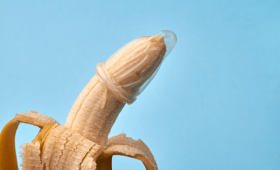Turkey has emerged as one of the top destinations for hair transplant procedures, attracting thousands of patients every year from all over the world. Renowned for its high-quality medical services, experienced surgeons, advanced techniques, and competitive prices, Turkey offers exceptional hair restoration treatments that combine precision and affordability. In this comprehensive guide, we will cover everything you need to know about hair transplantation, the procedure’s stages, recovery processes, types of techniques used, and how to find the right clinic through Cure Holiday.
1. Introduction to Hair Transplantation
What is Hair Transplantation?
Hair transplantation is a minimally invasive surgical procedure designed to restore hair in areas affected by hair loss. The procedure involves extracting healthy hair follicles from donor areas—typically the back or sides of the scalp—and implanting them in balding or thinning areas. Once transplanted, these follicles continue to grow naturally, providing a long-term solution for hair restoration.
Causes of Hair Loss
Hair loss can be triggered by several factors, including:
- Genetics: Male or female pattern baldness (androgenetic alopecia) is the most common cause.
- Age: As people age, hair tends to thin and fall out.
- Hormonal Changes: Conditions like thyroid imbalance, menopause, or pregnancy can impact hair growth.
- Stress and Lifestyle: Poor diet, lack of sleep, and high levels of stress contribute to hair thinning.
- Medical Conditions: Diseases like alopecia areata, scalp infections, and certain medications can cause hair loss.
Who Can Benefit from Hair Transplantation?
Hair transplant procedures are ideal for individuals experiencing permanent hair loss due to genetics or other irreversible causes. The best candidates are:
- Individuals with sufficient donor hair in the back or sides of their head.
- Men and women with pattern baldness or receding hairlines.
- Individuals seeking beard, eyebrow, or mustache restoration.
2. Types of Hair Transplant Techniques
Choosing the right technique depends on factors like hair type, the extent of hair loss, and personal preferences. Below are the most common techniques used in Turkey’s clinics:
1. Follicular Unit Extraction (FUE)
- FUE involves extracting individual follicles from the donor area and implanting them into the recipient area.
- It is the most common and preferred method because it leaves minimal scarring.
- Recovery time is shorter compared to older methods like FUT.
2. Direct Hair Implantation (DHI)
- DHI is a more advanced version of FUE, where follicles are implanted directly using a special tool called the Choi pen.
- The method offers better control over the angle, direction, and depth of hair implantation.
- DHI is ideal for dense hairline restoration but takes longer to complete.
3. Sapphire FUE
- Sapphire FUE is a variation of the FUE technique, utilizing sapphire-tipped blades for more precise incisions.
- This technique reduces tissue damage and promotes faster healing.
- It is often recommended for individuals with sensitive skin or those seeking a quicker recovery.
4. FUT (Follicular Unit Transplantation)
- FUT, also known as strip surgery, involves removing a strip of skin from the donor area to harvest follicles.
- Though it can result in visible scarring, it is sometimes used for patients requiring a large number of grafts.
3. The Hair Transplant Process
Pre-Operative Preparations
- Initial Consultation: The surgeon assesses the patient’s hair loss, determines the donor area, and suggests the best technique.
- Medical Tests: Blood tests and allergy screenings are performed to ensure the patient is fit for surgery.
- Instructions: Patients are advised to avoid smoking, alcohol, and blood-thinning medications before the surgery.
The Procedure Step-by-Step
- Anesthesia: Local anesthesia is applied to minimize discomfort.
- Extraction: Hair follicles are harvested from the donor area.
- Incisions: Tiny incisions are made in the recipient area.
- Implantation: Hair follicles are carefully implanted into the balding areas.
- Completion: The procedure typically takes 6-8 hours, depending on the number of grafts.
Post-Operative Care and Recovery
- Initial Days: Swelling and redness around the treated area are normal.
- First Month: Scabs form and fall off, and the transplanted hair may initially shed.
- 3-6 Months: New hair growth becomes noticeable.
- 1 Year: Full results are visible with thick, healthy hair.
4. Why Turkey is the Global Leader in Hair Transplants
Turkey’s dominance in hair transplantation is due to several factors:
- Affordable Prices: Hair transplant procedures in Turkey cost up to 70% less than in other countries like the UK or USA.
- Experienced Surgeons: Turkish surgeons have years of experience, performing thousands of successful procedures annually.
- Tourism and Healthcare: Patients can enjoy a combination of medical treatment and tourism, exploring Turkey’s rich culture while recovering.
5. Choosing the Right Clinic with Cure Holiday
Finding the perfect clinic can be overwhelming, but Cure Holiday simplifies the process:
- Clinic Network: We connect you with accredited clinics that offer the latest techniques.
- Best Prices: Cure Holiday ensures exclusive discounts through partnerships with top clinics.
- Support and Guidance: Our team assists with everything from booking to follow-up care.
- Guaranteed Services: We work only with clinics that provide guaranteed results and post-treatment support.
6. What to Expect During Your Trip
Travel Arrangements and Accommodation
- Cure Holiday Packages: Include airfare, hotel stays, and transportation between the airport, hotel, and clinic.
- Luxury Hotels: Patients can recover comfortably in 4- or 5-star hotels with spa facilities.
Combining Treatment with Tourism
- Istanbul: Explore the city’s historic landmarks, such as the Hagia Sophia and Blue Mosque.
- Antalya: Enjoy the beautiful beaches and scenic views along the Mediterranean coast.
7. Results, Risks, and Long-Term Care
Expected Results Timeline
- 1-3 Months: Transplanted hair sheds, making way for new growth.
- 6 Months: Significant hair growth begins.
- 12-18 Months: Full results with thick, healthy hair.
Common Risks and Side Effects
While rare, some side effects may occur, such as:
- Swelling and redness in the treated area.
- Temporary shedding of transplanted hair.
- Infection or scarring in rare cases.
Maintaining Results After Transplantation
- Follow-Up Care: Attend follow-up consultations as advised.
- Healthy Lifestyle: Maintain a balanced diet, avoid smoking, and manage stress.
- Proper Hair Care: Use recommended shampoos and avoid harsh chemicals.
8. Conclusion
Turkey has solidified its reputation as the global leader in hair transplantation, offering exceptional services at affordable prices. With advanced techniques such as FUE, DHI, and Sapphire FUE, and experienced surgeons delivering natural-looking results, patients can expect top-tier treatment. Cure Holiday ensures a smooth and stress-free experience, handling every aspect from clinic selection to travel arrangements.
If you are ready to regain your confidence with a full head of hair, Cure Holiday is here to guide you through every step of the journey. Book your consultation today and take the first step toward a life-changing transformation!



